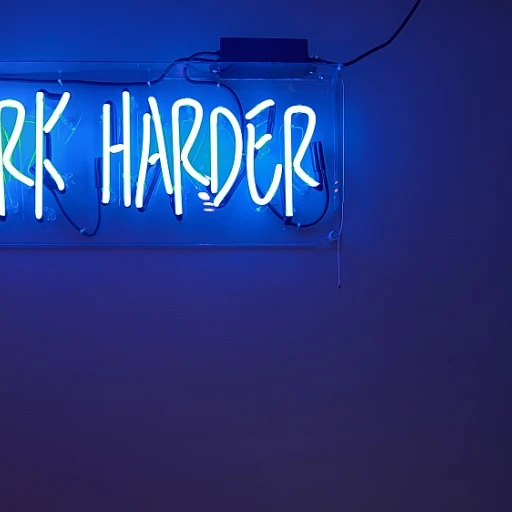Understanding the Role of HR Communication
Exploring the Vital Impact of HR Communication
In today's dynamic work environment, understanding the pivotal role of HR communication is crucial. HR communication acts as the bridge between management and employees, aiding in the conveyance of essential information, thereby boosting motivation and engagement within your team. When done effectively, it can shape how your employees feel about their work and foster a sense of belonging, ultimately enhancing job satisfaction and life balance.
Good communication helps your team understand the company's goals and their role in achieving them. When employees clearly see how their tasks align with larger goals, they are more likely to engage and stay motivated. This ensures that they not only stay engaged in their daily tasks but also contribute to the overall success of your business.
Motivation and engagement go hand in hand with clear, consistent, and transparent communication strategies. Regular updates, constructive feedback, and recognition of hard work can make a significant difference in how motivated your team members feel at their job. By addressing the diverse needs of employees, you can tailor your communication strategies to enhance their experience and encourage them to perform at their best.
Despite the best efforts, there might be times when employee engagement dips. This is where HR communication should step in to keep the morale high and provide support. By prioritizing effective communication, your company can create a supportive and positive work environment that enables employees to thrive.
To further explore the importance of HR strategies and recognize the behind-the-scenes work done by human resources, you can read more on celebrating the unsung heroes
here. This insight can help companies acknowledge the hard work put in by HR professionals to maintain a cohesive work-life environment.
Identifying Employee Needs and Preferences
Recognizing and Catering to Employee Preferences
Understanding what your employees need and prefer is crucial for boosting motivation and engagement in your work environment. A positive work environment begins with acknowledging that each employee is unique, with individual goals, motivations, and challenges. In this context, effective HR communication involves recognizing these distinctions and tailoring strategies accordingly.
To start with, consider conducting surveys or focus groups to gather insights into what makes your team members stay motivated. This information will provide a foundation upon which you can build more personalized communication strategies. Listening to employee feedback is not just beneficial for morale—it is essential for ensuring job satisfaction and creating an environment where team members feel heard and appreciated.
Your goals should also include establishing open channels of communication where employees feel comfortable sharing their thoughts. Regular check-ins can help employers get a better understanding of their team's day-to-day experiences, allowing them to identify potential issues and address them promptly.
Furthermore, recognizing individual achievements plays a significant role in motivating and engaging employees. Highlighting accomplishments publicly can make employees feel valued and encourage them to invest more effort in their tasks. To learn more about recognizing employee achievements effectively, refer to
this resource.
A company that consistently strives to meet the needs of its employees is more likely to maintain a motivated workforce. By taking the time to understand employee preferences and tailoring communication efforts to meet them, businesses can foster a more engaged and motivated team.
Crafting Engaging Communication Strategies
Engaging Strategies for Effective Communication
Crafting communication strategies that resonate with your team members is crucial for boosting motivation and engagement. A tailored approach that aligns with the goals of your business helps in maintaining a motivated work environment. Here's how you can develop these strategies more effectively:
- Recognize Varied Team Dynamics: Every team is unique and comes with its own set of dynamics. Understanding these intricacies ensures that your communications remain relevant and impactful. This approach helps employees feel valued and ensures they stay engaged with their tasks and overall job responsibilities.
- Set Clear and Achievable Goals: Linking communication strategies to clear and achievable goals keeps team members motivated. When employees know what is expected, they can align their efforts with these objectives, thereby increasing engagement levels.
- Incorporate Feedback Mechanisms: Developing a system for feedback within your communication strategy is essential. It promotes a culture of openness and contributes positively to the work environment. This encourages employees to voice their ideas and concerns, leading to better job satisfaction and an inclusive team atmosphere.
- Balance Work Life through Personalized Communications: Employee engagement and motivation are nurtured when communication considers personal life balance. Address mental health and work-life balance topics through targeted messaging, ensuring employees feel supported.
By implementing these engaging strategies, your business will be better positioned to create an inclusive and positive workplace. Such a work environment not only motivates employees but also helps them stay committed to your company’s long-term objectives. For more insights on maintaining ethical practices and achieving organizational success, consider exploring this
comprehensive resource. Keeping these elements in mind can significantly enhance employee engagement and productivity over time.
Leveraging Technology for Better Engagement
Utilizing Technological Advances to Enhance Employee Interaction
In today's rapidly evolving work environment, leveraging technology to foster communication and engagement is more critical than ever. With the arrangement of remote work and flexible schedules, it's crucial to ensure your employees feel connected and motivated, regardless of their physical workspace.
Modern communication tools can help maintain a seamless flow of information within your team, ensuring that no employee feels isolated or out of the loop. Encouraging the use of platforms like Slack, Microsoft Teams, or Zoom allows team members to collaborate efficiently, stay motivated, and share daily achievements towards your company goals.
Effective use of technology can also help manage workloads and reduce stress, which promotes better work-life balance. When your employees feel supported and engaged, they are more likely to stay motivated and enthusiastic about their tasks. Automated feedback systems and project management tools can further enhance job satisfaction by keeping employees informed and recognized for their hard work.
Bullet lists, important in clarity:
- Promote collaborative tools: Encourage daily check-ins and team meetings using reliable communication platforms.
- Embrace project management software: These help in tracking progress and aligning team members with your goals.
- Implement recognition systems: Automated recognition can significantly boost employee motivation and engagement.
Monitoring how your employees utilize these technological tools will give insights into potential areas of improvement and innovations. Regular feedback loops can help fine-tune these systems, ensuring that your team remains productive and motivated in their roles. Keeping your employees engaged through the smart use of technology will not only help them stay connected but also contribute to their mental health and overall job satisfaction throughout your organization.
Measuring the Impact of HR Communication
Analyzing the Effectiveness of Communication Efforts
The role of Human Resources in communication is crucial to ensuring employees stay motivated and engaged. But how can you ensure that these efforts are genuinely effective in boosting your team's motivation and engagement? Measuring the impact of HR communication is an essential step in understanding and enhancing the work environment.
Firstly, it is vital to identify key performance indicators (KPIs) that align with your goals and the overall company objectives. These KPIs could include employee engagement scores, job satisfaction rates, turnover rates, or specific feedback from team members. By monitoring these metrics over time, you can gauge if your communication efforts are aligned with your employees' needs and preferences.
Surveys are an effective tool to gather insights directly from those impacted by your strategies. Regular employee surveys can help you stay informed about your employees' work life balance, job satisfaction, and mental health. These surveys should be short, focused, and designed to encourage honest feedback. When employees feel heard and understood, they are more likely to remain engaged in their tasks and motivated in their work.
Another method of evaluating your HR communication strategies is through employee feedback loops. Create an open channel where team members can express their thoughts on communication efforts and suggest improvements. This not only empowers employees but also allows you to continuously refine and adjust your strategies to better meet the needs of your business.
Monitoring collaboration and communication technology usage can also provide insights into how well your communication efforts are being received. If your chosen platforms are being utilized effectively by your team, it indicates that they are adding value to employees' day-to-day tasks and contributing to a positive work environment.
Finally, keep an eye on qualitative data such as anecdotal evidence or social interactions among employees. This type of data, although less tangible, provides context to the quantitative metrics and adds depth to your understanding of the overall employee experience.
By consistently evaluating these aspects, you can ensure that your HR communication strategies not only keep employees motivated and engaged but also contribute to a thriving, supportive work environment.
Continuous Improvement and Feedback Loops
Embracing Continuous Feedback and Improvement
In the dynamic world of work, it's essential for your team members to feel heard and valued. Continuous feedback and improvement are cornerstones for cultivating a positive work environment where all employees feel motivated and engaged.
- Fostering Open Dialogue: Encourage open communication within your business. By regularly soliciting input from your employees, you can identify areas for improvement and ensure that your company aligns with their expectations and goals.
- Implementing Feedback Mechanisms: Introduce mechanisms such as surveys or suggestion boxes to gather insights on employee engagement. This will not only help your team feel involved but will also provide you with actionable data to enhance your strategies over time.
- Recognizing and Adaptation: Recognize the hard work and achievements of your team members. Acknowledging their efforts boosts job satisfaction and motivation. Use feedback to adapt your communication strategies, ensuring that they remain relevant and effective.
- Commitment to Continuous Learning: Staying motivated at work often requires learning and self-improvement. Encourage your employees to pursue training and development opportunities. This helps them stay engaged with their tasks and committed to your business goals.
By embracing feedback loops and committing to continuous improvement, you promote a work-life balance that benefits both your employees and your company. It's about creating an atmosphere where everyone feels a part of the team, stays motivated, and contributes to overall employee engagement. Ultimately, these efforts enhance not just the motivation of your team but also the success of your business.













